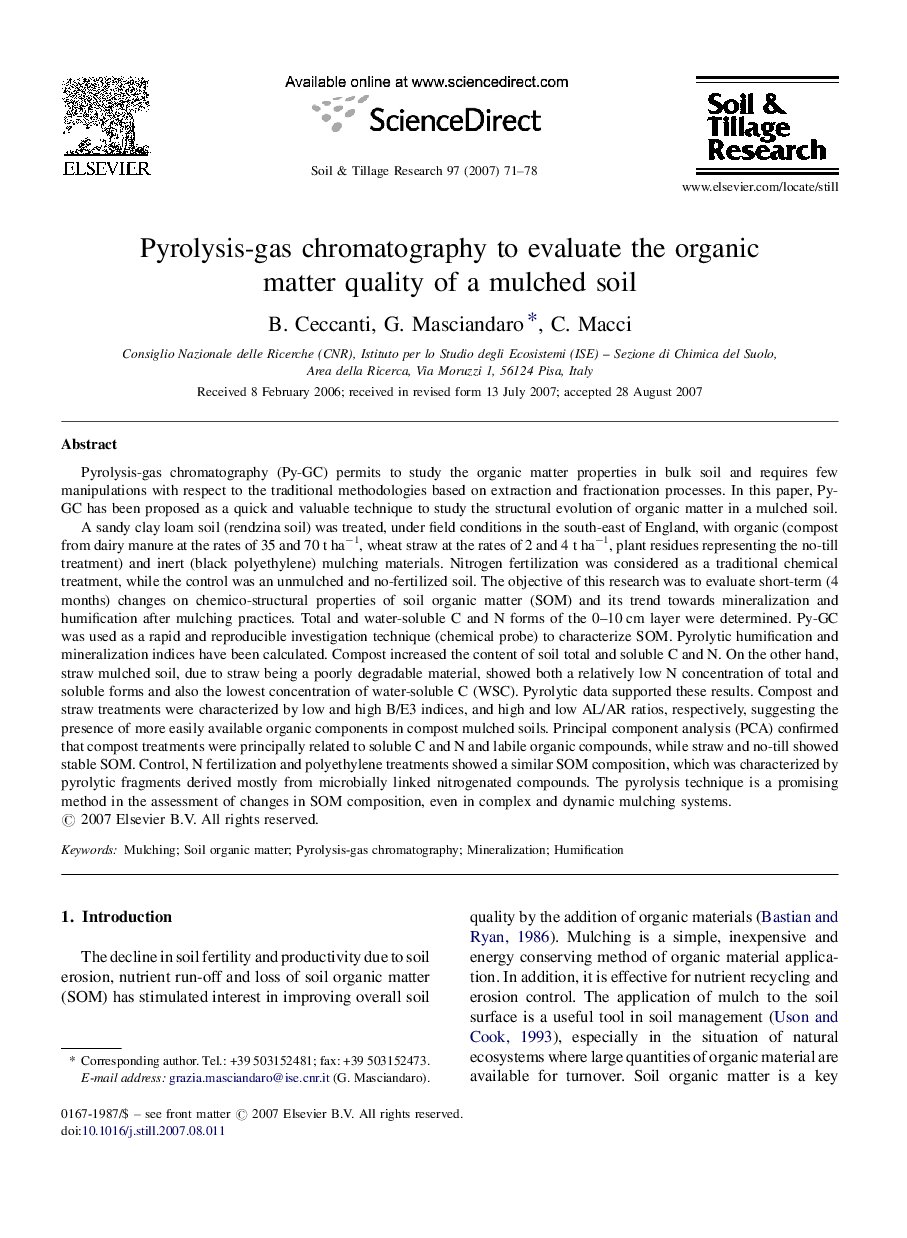| Article ID | Journal | Published Year | Pages | File Type |
|---|---|---|---|---|
| 306570 | Soil and Tillage Research | 2007 | 8 Pages |
Pyrolysis-gas chromatography (Py-GC) permits to study the organic matter properties in bulk soil and requires few manipulations with respect to the traditional methodologies based on extraction and fractionation processes. In this paper, Py-GC has been proposed as a quick and valuable technique to study the structural evolution of organic matter in a mulched soil.A sandy clay loam soil (rendzina soil) was treated, under field conditions in the south-east of England, with organic (compost from dairy manure at the rates of 35 and 70 t ha−1, wheat straw at the rates of 2 and 4 t ha−1, plant residues representing the no-till treatment) and inert (black polyethylene) mulching materials. Nitrogen fertilization was considered as a traditional chemical treatment, while the control was an unmulched and no-fertilized soil. The objective of this research was to evaluate short-term (4 months) changes on chemico-structural properties of soil organic matter (SOM) and its trend towards mineralization and humification after mulching practices. Total and water-soluble C and N forms of the 0–10 cm layer were determined. Py-GC was used as a rapid and reproducible investigation technique (chemical probe) to characterize SOM. Pyrolytic humification and mineralization indices have been calculated. Compost increased the content of soil total and soluble C and N. On the other hand, straw mulched soil, due to straw being a poorly degradable material, showed both a relatively low N concentration of total and soluble forms and also the lowest concentration of water-soluble C (WSC). Pyrolytic data supported these results. Compost and straw treatments were characterized by low and high B/E3 indices, and high and low AL/AR ratios, respectively, suggesting the presence of more easily available organic components in compost mulched soils. Principal component analysis (PCA) confirmed that compost treatments were principally related to soluble C and N and labile organic compounds, while straw and no-till showed stable SOM. Control, N fertilization and polyethylene treatments showed a similar SOM composition, which was characterized by pyrolytic fragments derived mostly from microbially linked nitrogenated compounds. The pyrolysis technique is a promising method in the assessment of changes in SOM composition, even in complex and dynamic mulching systems.
